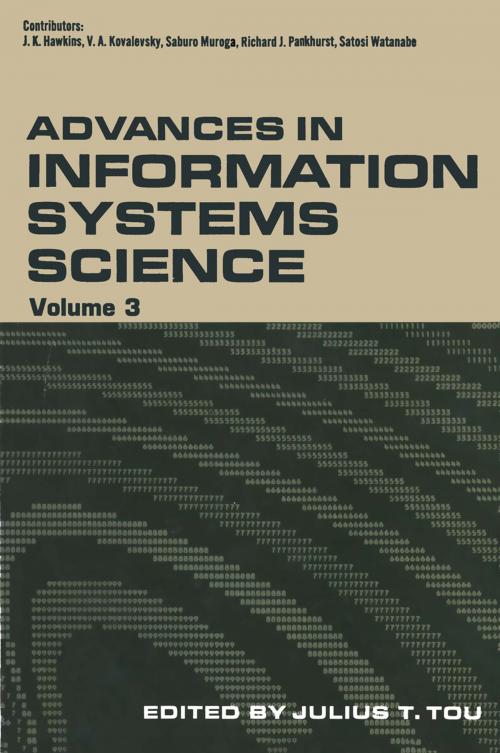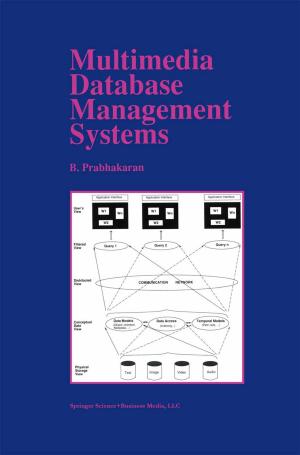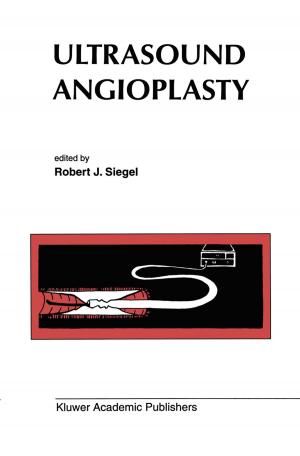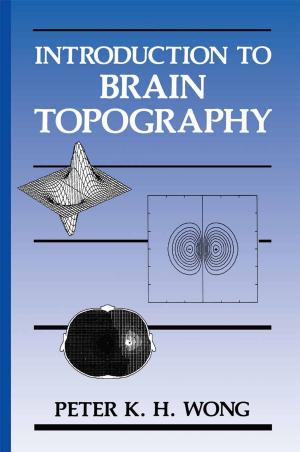Advances in Information Systems Science
Kids, Natural World, Nonfiction, Reference & Language, Education & Teaching, Science & Nature, Science| Author: | Julius T. Tou | ISBN: | 9781461582434 |
| Publisher: | Springer US | Publication: | December 6, 2012 |
| Imprint: | Springer | Language: | English |
| Author: | Julius T. Tou |
| ISBN: | 9781461582434 |
| Publisher: | Springer US |
| Publication: | December 6, 2012 |
| Imprint: | Springer |
| Language: | English |
Information systems science embraces a broad spectrum of topics. It is vir tually impossible to provide comprehensive and in-depth discussion, other than simple recitals of recent results, of every important topic in each volume of this annual review series. Since we have chosen the former approach, each volume will only cover certain aspects of recent advances in this bur geoning field. The emphasis in this volume, the third of a continuing series, is focussed upon pattern recognition, pictorial information manipulation, and new approaches to logical design of information networks. In Chapter 1, V. A. Kovalevsky presents a tutorial survey of practical and theoretical developments in pattern recognition. He categorizes the basic developments in three different directions. The first direction is charac terized by an empirical treatment with highly specialized recognition schemes. In the second direction, the major efforts are centered upon the cre ation of learning systems capable of improving recognition performance on the basis of past experience. The majority of the work in the third direction is devoted to the study of the basic structure of complex patterns, the con struction of mathematical models for pattern recognition, and the analysis of complex pictorial representations. The author elucidates the "heuristics" approach and the "science" approach to pattern recognition problems. This chapter together with Chapter 2 of this volume supplements the chapter on Engineering Principles of Pattern Recognition in Volume 1 to provide a more complete treatment of this subject.
Information systems science embraces a broad spectrum of topics. It is vir tually impossible to provide comprehensive and in-depth discussion, other than simple recitals of recent results, of every important topic in each volume of this annual review series. Since we have chosen the former approach, each volume will only cover certain aspects of recent advances in this bur geoning field. The emphasis in this volume, the third of a continuing series, is focussed upon pattern recognition, pictorial information manipulation, and new approaches to logical design of information networks. In Chapter 1, V. A. Kovalevsky presents a tutorial survey of practical and theoretical developments in pattern recognition. He categorizes the basic developments in three different directions. The first direction is charac terized by an empirical treatment with highly specialized recognition schemes. In the second direction, the major efforts are centered upon the cre ation of learning systems capable of improving recognition performance on the basis of past experience. The majority of the work in the third direction is devoted to the study of the basic structure of complex patterns, the con struction of mathematical models for pattern recognition, and the analysis of complex pictorial representations. The author elucidates the "heuristics" approach and the "science" approach to pattern recognition problems. This chapter together with Chapter 2 of this volume supplements the chapter on Engineering Principles of Pattern Recognition in Volume 1 to provide a more complete treatment of this subject.















